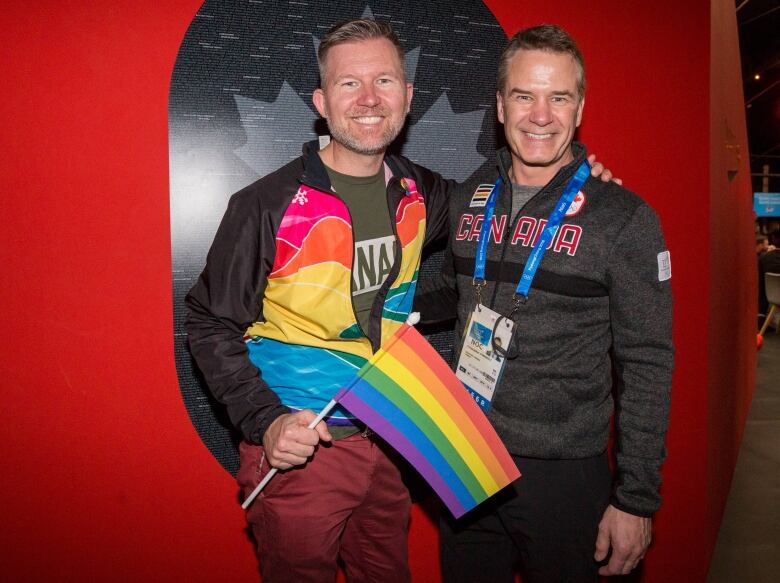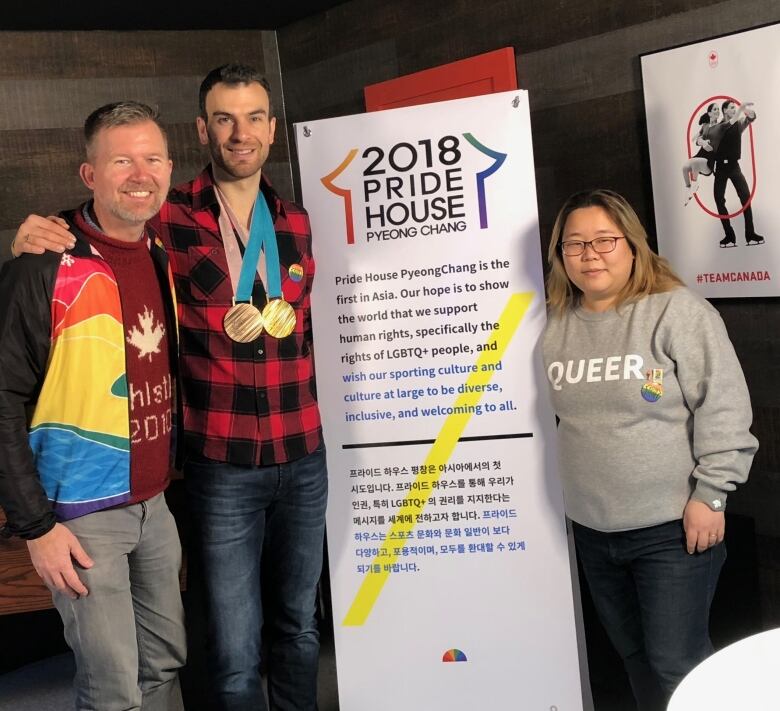Why Pride House is the most significant legacy of the 2010 Olympics
Pavilion for the Rainbow Nation was a first, and has gone on to feature at subsequent Games

This is an opinion by Dean Nelson, the founder of Pride House at the 2010 Olympic and Paralympic Games. For more information about CBC's Opinion section, please see the FAQ.
When I look back at the crazy idea to create a safe and inclusive space for queer athletes at the 2010 Olympics Games, it seemed like an impossible dream.
You've probably heard of Canada House or other hospitality centres at big sporting events. But Pride House was different we weren't just tied by geography. This pavilion was for the Rainbow (LGBTQ) Nation,the first in the Olympics. And it happened right here in Vancouver.
Reflecting on how Pride House came to be, I realize I was very lucky to come from a place of privilege, as I already had the relationships and respect from my community to build something revolutionary at the 2010 Games.
Our biggest hurdle was managing all the community support something subsequent pride houses have sometimes had challenges with.

In 2010, Pride House was a beacon of hope and visibility for our LGBTQ athletes, coaches and support teams.
We dared to speak about homophobia within the Games.When some French-language commentators made homophobic and disparaging remarks against U.S. figure skaterJohnny Weir,Pride House held a press conference saying an athlete should be judged purely on their athletic skill.
It was an education centre but also a safe and welcoming venue for gay and lesbian athletes, coaches, friends and families.
I distinctly remember a 12-year-old girl from Tennessee who dragged her parents to Pride House. She had a friend at home that identified as LGBTQ and said to me that getting an Olympic Pride House Pin would mean the world to them.
I saw families shed tears as they looked at the giant world map showing where it was safe to be gay and where it was punishable by death.
We then thought that if we could show Pride House's relevance in Vancouver, we might have an opportunity to createa safe space in host cities where there is little tolerance or acceptance for being LGBTQ.

Pride House atsubsequent Games
The next Olympic Games in 2012 in London hada Pride House. But in 2013, Russia passed its anti-gay law and the country's government nixed any plans for a Pride House at the 2014 Sochi Winter Olympics, which was disappointing. Russia saw any promotion of non-heteronormative culture, expression, lifestyle as a criminal offence.
But Pride House supporters mobilized worldwide, some by raising Pride flags and others by painting rainbow crosswalks in front of Russian embassies. Canadian Olympian speed skater Anatastia Bucsis came out publicly to underscore her opposition to Russia's stance.
The visible support around the world for LGBTQ athletes was at an all-time high. This allowed for Pride House, athletes and many advocacy groups to lobby the International Olympic Committee (IOC) to protect all of their athletes regardless of their gender or sexual orientation.
In December 2014, the IOC stepped up and updated the Olympic Charter to include gender and sexual diversity as part of its non-discrimination policy. That meant that, as of the 2022 Games, the host city has to agree to a specific anti-discrimination clause in its contract.
But while the 2016 Rio Summer Olympics had a record number of LGBT athletes,the hopes of having a Pride House at the 2018 PyeongChang Winter Gameslooked dire. South Korea is a nation where being gay is difficult, though not criminal.
So Pride House worked with the Korean Sexual-Minority Culture andRights Centre and the Canadian Olympic Committee to co-hosta Pride House section within Canada House. In doing so, Pride House was able to continue to have a physical presence and visibility at the Games.
It was bittersweet: Though it was the first Pride House to be established in Asia, it highlightedSouth Korea's difficulty withLGBTQ inclusion.

Looking back at the past decade, the Pride House journey has been exciting, bumpy and emotional.
I am proud to see how Pride House has grown from an idea formed in Whistler into an international movement that has been represented at other huge sporting events like the FIFA World Cup and Commonwealth Games.
The volunteer stewards for Pride House have welcomed over 50,000 visitors to 18 pavilions in 12 countries with one purpose: supporting local communities to advance LGBTIQ+ inclusion and combat homophobia and transphobia through and throughout large-scale sporting events.
So, I would argue that Pride House is the most significant legacy of our 2010 Olympics.
We continue to advocate for people to be their authentic selves,to be their very best,while creating safe and inclusive environments for us all to play and enjoy our sports freely and we must remain vigilant that these advances continue.
- This column is part of CBC's Opinion section. For more information about this section, please read our FAQ.
- Want to write an opinion for CBC British Columbia? Please email bcvoices@cbc.ca.












_(720p).jpg)


 OFFICIAL HD MUSIC VIDEO.jpg)
.jpg)



























































































